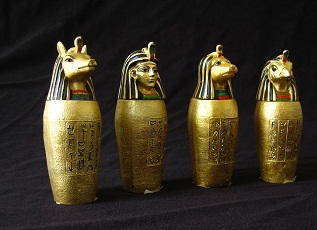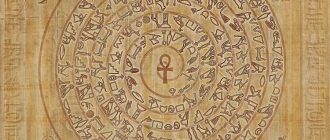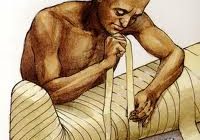Want to learn more about ancient Egyptian canopic jars? Read on for facts and info on the use of Canopic jars in ancient Egyptian burial rituals…
The Egyptians were known for practicing unusual and elaborate burial rituals. In order to perform these rituals the Egyptians had specific equipment such as Canopic jars. These jars were actually used while the process of mummification was taking place. They served as the storage containers for preserving the “viscera” for life after death.
Ancient Egyptian Canopic jars have been in use since the old Kingdom and lasted up until the very last era of the Egyptians. However the way in which these jars were used varied over time. When it came to storing the viscera in the jars the Egyptians would make use of a number of different jars and each organ had its own dedicated Canopic jar.
Many people are of the notion that Canopic jars are associated with the Greek legend of Canopus. However this is not true as later Egyptologist have proved that the two concepts did not have anything to do with each other.
Canopic Jar Traditions
According to tradition the deceased individual would have four Canopic jars. Each of these jars was meant to safeguard a particular organ. The most important organs in the sight of the Egyptians were the lungs, liver, the stomach and the intestines. The design sense employed in creating Canopic jars went through a series of changes over time. Back in the days of the old Kingdom the jars were relatively simpler and had plain lids. However by the time of the first intermediate period the Canopic jars were now being created with human heads. The purpose of utilizing human heads was to resemble and represent the dead.
The practice of creating human heads for Canopic jars continued up until the advent of the new Kingdom. It was by the end of the 18th century that this trend was replaced and instead of the human heads the Canopic jars now had lids symbolizing the four sons of Horus. The four sons of Horus were also considered to be the “gods of cardinal compass points”. Each of the four was charged with the responsibility of protecting one of the four sacred organs while they themselves would protect each other from harm that may be caused to them from the outside.
The Four Sons of Horus
The four sons of Horus as represented on the Canopic jars included Damutef, who was a jackal headed god responsible for protecting the stomach. He represented the East and was granted divine protection from another Egyptian deity, the goddess Neith. The second was a falcon headed deity known as Qebehsenuef. This particular deity was responsible for protecting the intestines and was granted protection from Selket. The third jar which contained the lungs had the Egyptian deity Hapi as its representative. Hapi was also taken as the representative of North and was granted protection by Nephthys. The fourth son of Horus was Imseti who represented the North and protected the liver while himself being protected by the Egyptian goddess Isis.





